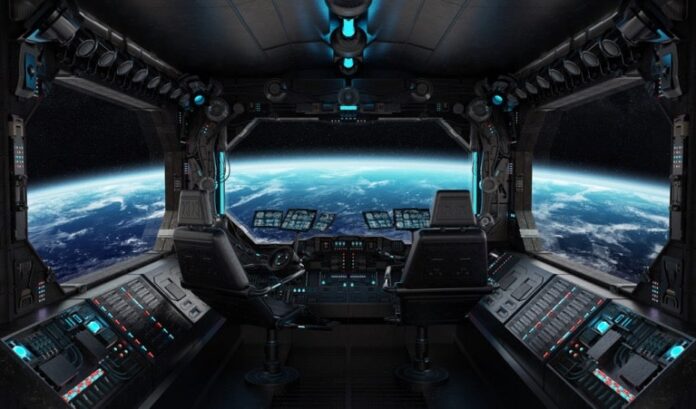Space is an extremely cold and hostile environment — not only for humans but also for man-made technology. Thousands of satellites we have in orbit today must be built to withstand those harsh conditions; otherwise, we risk disruptions in communications and other information we rely on —for navigation, weather forecasting, scientific research, etc.
Today’s satellite platforms have gone a long way, but no technology is 100% error-free. Below, we will examine the total anomalies of satellite platforms, their types, causes, and effects, and list a few real-life examples.
What is a Satellite Anomaly?
A satellite anomaly is any malfunction disrupting a satellite’s performance. Anomalies generally occur in satellite platforms, aka buses, because that’s where all the essential electronic equipment is hosted. Like any malfunction, platform anomalies can range from a minor glitch to a complete failure that renders an entire spacecraft inoperative. Fortunately, the last scenario is not too common; usually, the types of satellite anomalies go down to:
- Technical anomalies arising from platform hardware or software malfunctions.
- Environmental anomalies resulting from the effects of a harsh space environment on a satellite platform.
- Operational anomalies occur from errors in the command and control processes.
- Human errors, or mistakes made by ground control operators that, unfortunately, happen as well.
Sure, the satellite anomalies list can be expanded, but most platform malfunctions are caused by these four types of errors. Some notable satellite anomalies examples in each category include:
- Technical: in 1993, NASA lost contact with its Mars Observer due to a rupture in the fuel tank.
- Environmental: in 2010, the Galaxy 15 satellite owned by Intelsat was affected by space weather and drifted out of control, causing interference with other satellites.
- Operational: in 2005, ESA’s CryoSat-2 satellite crashed into the Arctic Ocean due to a launch failure caused by incorrect configuration.
- Human error: in 1999, NASA lost its Mars Climate Orbiter due to a metric conversion error while translating measurement units.
Judging from these real-life examples, it should be clear that satellite platform anomalies do not happen very often and, in most cases, can be fixed without any serious damage to the spacecraft or lasting consequences back on Earth — even though the latter isn’t entirely out of the question.
Now, that more spacecraft are launched in orbit, the sheer numbers make room for more platform anomalies to come. So, let’s discuss the most common causes and effects of satellite anomalies to get an idea of what we might be facing.
Common Causes of Satellite Anomalies
Besides technical and human errors that lead to platform malfunction, what are the factors affecting spacecraft in the space environment? The most common cause is space itself. In most cases, it is possible to prepare for a harsh space environment by designing high-resistance coating to shield the spacecraft and its platform from hostile external forces. Still, over time, extreme space conditions take their toll — because all spacecraft platforms are regularly affected by:
- Space weather: constant exposure to solar flares, cosmic rays, and geomagnetic storms, can have severe impacts on satellite platform operations. High-energy particles can penetrate satellite shielding, causing electronics to experience temporary or permanent failures.
- Radiation: long-term radiation exposure can damage satellite platform components over time, leading to degraded performance or complete failure.
- Space debris: collisions with micrometeoroids can cause significant damage. Artificial space debris (pieces of defunct satellites or discarded rocket stages) is another growing concern, posting danger for operational spacecraft.
- Thermal stress: spacecraft platforms experience extreme temperature fluctuations when transitioning between sunlight and the shadow of Earth, which, in the long run, causes material fatigue and structural failures.
- Vacuum: no ‘air’ eventually causes outgassing and cold welding, affecting the integrity of platform materials — even despite advanced shielding.
Potential Consequences of Platform Anomalies
Now that we understand which factors impact space platform performance, a more pressing question is — what are the problems with satellites in space? Do they have any effect on our earthly routine? Unfortunately, they do, and the most common consequences of platform anomalies include:
- Operational disruptions in communication and navigation: we heavily rely on space platforms for communication and commuting, and anomalies can disrupt these services, leading to economic losses and safety risks.
- Loss of scientific data: scientific satellites, especially platforms for Earth observation and climate change monitoring, gather critical data for research. Anomalies can result in the loss of valuable information, setting back scientific progress.
- Increased mission costs: resolving major platform anomalies when they occur often requires expensive intervention, such as repair missions or deploying replacement satellites.
- More space debris: anomalies that lead to satellite breakups contribute to the growing problem of space debris, further increasing the risk of collisions with other satellites and forcing space agencies to introduce pricey clean-up initiatives.
Wrapping up
To wrap up on a positive note, we must admit that most satellite platform anomalies cause short-term disruptions — something we barely notice on Earth. Besides, as technology moves forward, engineers learn from their mistakes, regularly introducing more advanced decisions. And since space is more accessible today, many bright minds will yet make their valuable contribution to the industry development.
